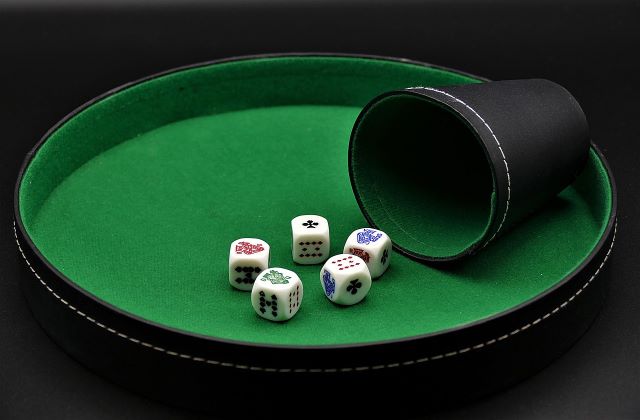I’ve always been interested in playing with dice, and the more I look, the more recreational activities involving dice I come across.
For example, dice are used in activities of chance and skill, as well as in many classics like Snakes & Ladders and Monopoly, in countless tabletops like Dungeons & Dragons, RPGs, and many other activities.
Some dice formats are much easier to play than others, and depending on where you live will determine which dice variants you will have access to.
I only ever thought there was one type of dice – the standard cube-shaped, six-sided dice (aka polyhedron) with dots (pips) on each side from one to six.
I couldn’t be further from the truth. There are several different dice shapes.
They can rest in multiple positions after being rolled, and their main purpose/function is to generate random values used in a wide range of physical and digital entertainment activities.
Let’s dive straight in and compare how dice vary across the world.
When were dice invented?
According to the history books, the earliest mention of dice and the oldest evidence dates back to around five thousand years ago in Ancient Egypt.
There’s also plenty of evidence to suggest that certain types of dice were used to entertain people in many other early civilizations in India, Greece, China, and Rome.
I discovered that they were used not only as entertainment but also to read fortunes and even predict future events, such as the weather or the destinies of rulers.
However, dice were more commonly used to entertain and have been a staple of humankind for millennia.
How do dice and the activities we play to have fun with them change worldwide?
The shape of dice, the number of sides they have, the types of symbols they have on them, and what they can be used for varies greatly worldwide.
For example, some dice variants are only local to certain regions and never spread, whereas others are more popular and found in many countries.
Two and four-sided dice evidence has been discovered in archaeological digs in the Middle East and Ancient Egypt. Dice with up to 20 sides have been found from Roman and Ptolemaic times, but the one that seems to be more widespread is my favorite six-sided dice.
Apart from cube-shaped dice, the other four platonic dice shapes can typically have 4, 8 or 12 sides, and each dice can have different shaped sides of varying lengths.
The main shapes I’ve come across apart from the cube are the following:
- Tetrahedron
- Octahedron
- Pentagonal
- Trapezohedron
- Dodecahedron
- Icosahedron
Six-sided cube dice are more common in many Western/European countries, and the dice found in these regions have opposite sides that always add up to 7.
In other countries I’ve visited, like India, six-sided numbered dice are common, but instead of numbers, you also find them with symbols like diamonds, clubs, spades, hearts, anchors, crowns, and flags, especially in hit titles, such as Jhandi Munda.
Can dice be played online?
Yes, in many countries where real money gambling on licensed and regulated websites is legally permitted, a handful of market-leading software providers and content development studios have produced a range of classic and modern dice variations for the digital realm.
For example, the most common online dice games I’ve come across on my favorite sites are Craps, Sic Bo, Super Sic Bo, Jhandi Munda, and even several dice-themed online fruit machines and scratchcards.
Most are computer-generated, meaning they have computer-generated graphics, animations, sound effects, and outcomes/results. I’ve also found a growing number of highly sophisticated live dealer dice variants from award-winning providers like Evolution Gaming.
Don’t forget that you must be of legal age in your country to play dice online using real money. I live in the UK, where I have access to hundreds of world-class sites with plenty of dice variants to choose from, and here, you only need to be 18 to play them.
In other countries, you may find that it’s 21 (most US states) or 19 (most Canadian provinces).
Live dealer dice variants are unavailable in the free-play mode and don’t rely on Random Number Generators (RNGs) to produce the results, but they are usually playable from just $/€/£0.10 to $/€/$0.50 per round.
Most other computer-generated dice variants can also be accessed in the free-play mode, which is useful when trying them out for the first time.
Top titles to check out in 2024
If you’re looking for a selection of dice variants to play in 2024 and want something other than the ones already mentioned above, then you may also like to try several other iconic titles involving dice, such as Farkle, Elder Sign, King of Tokyo, Sevens, Football Studio Dice, Lightning Dice, and Dice Dice Dice.
That’s not forgetting Slice and Dice, Dice Risk, Wicked Dice, Dicey Fruits, 88 Fortunes Dice, Ludo, Liar’s Dice, Boggle, Dice 10000, Backgammon, and Hazard, to name just a few.
Remember, if you play any of these dice variants for gambling purposes, always remember to gamble responsibly. One of the most effective ways I’ve found to help me remain within my budget, which I set before I start playing, is to set win/loss limits, session time reminders, spending limits, and deposit limits.

